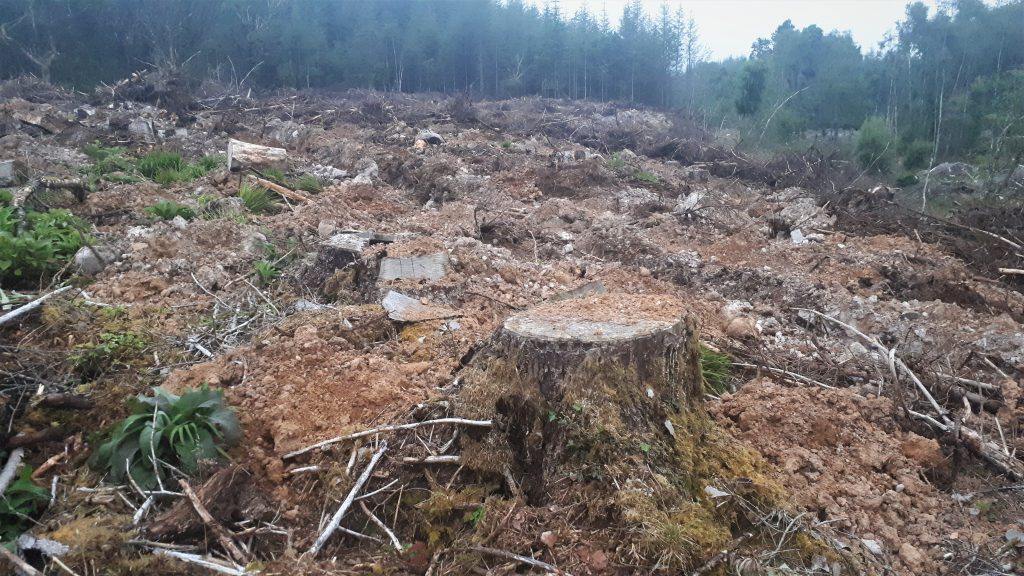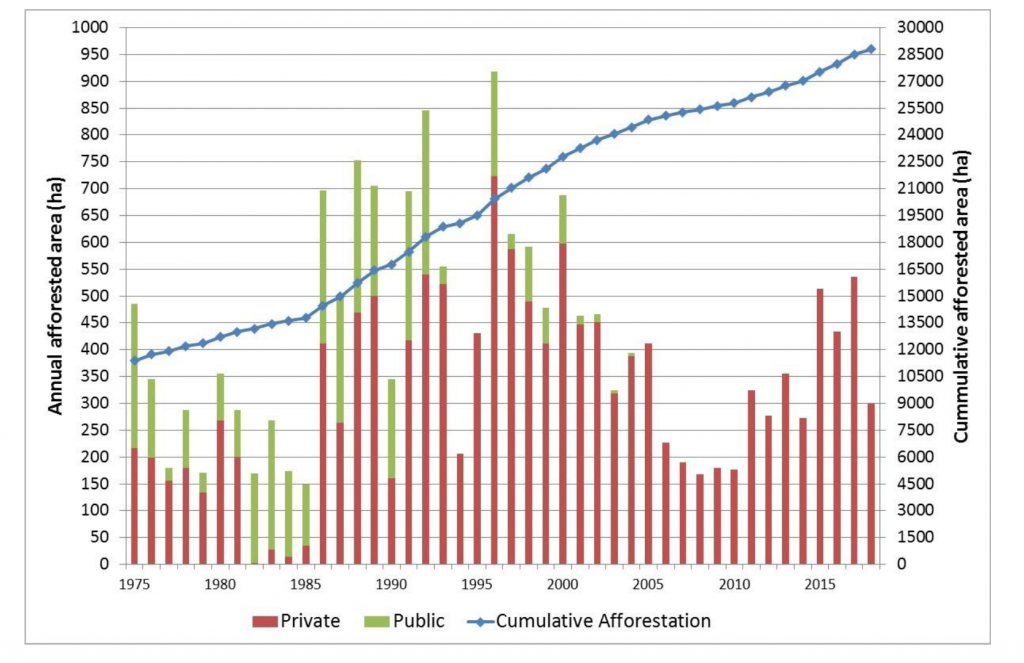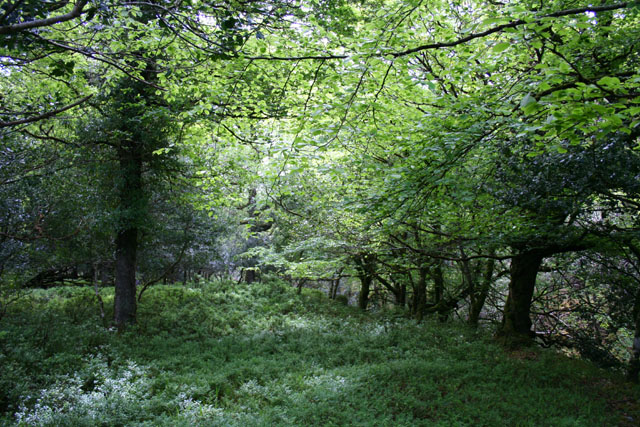Poor regulatory oversight key issue for Leitrim forestry

September 3rd, 2019
Weak implementation of afforestation guidelines and regulations was identified as a key concern for respondents to a UCD-led study on forestry policy in Co Leitrim.
The survey was conducted as part of an independent study released yesterday by the Department of Agriculture to assess the social and economic impacts of forestry in the north-west county.
The Department commissioned the University College Dublin-led study amid growing concern over the conifer plantation model in the county. Since the Forestry Appeals Committee was set up in 2018, a quarter of the 89 appeals submitted to it have come from Leitrim.
The county is the most forested in the country with almost 19 per cent (30,000 hectares) of all land under forest cover, substantially higher than the national average of 11 per cent.
Conifers account for 70 per cent of trees planted in Leitrim and clear-fell is the main management approach used where all stems are removed in the final harvest.
The study also examined the current regulatory environment in the county, as well as conducting interviews and accepting submissions from concerned groups and individuals on the issue.

Regulatory environment
A survey of 126 forest owners in the county was conducted, 70 per cent of whom were based in Leitrim. The UCD team also conducted interviews with 23 individuals and groups, including NGOs, foresters, and farming bodies, and received 53 public submissions.
In terms of regulations, the overall response was that there is “weak implementation” of guidelines in the county, with one forest owner telling the researchers that there are “poor levels of inspections on reforestation sites that have been clear-felled”.
The UCD-led study team found that the field inspection rate for felling licence applications in 2018 was only six per cent, even though the county had the second-highest level (126) of felling licences that year. The average national rate was 19 per cent in 2018.
The researchers also found that only 61 per cent of sites were visited in 2018 to assess whether the site was good for planting and/or was environmentally suitable in advance of an afforestation licence being issued. Just over two-thirds of sites were subject to field inspection before final grant payment was made by the State, the study said.
Other respondents raised concern that some owners of larger-scale plantations have avoided requirements for planning permission by planting smaller parts of the land in stages, either buying adjoining established forests or unplanted land where a planting licence was already granted.
“The issue raised is that without planning permission being required for small or large plantations, the public has no opportunity to address the effects that the plantation has on them or the environment,” the study states.

Outside investors
The study found that the economic value associated with forestry and wood processing in 2017 in Leitrim was €26.5 million, with over 300 jobs both in and out of the county associated with activities there.
Concerns were raised to researchers in relation to the level of ownership from investor’s living outside of the county. The study found that 30 per cent of forest owners were not resident in Leitrim, half of whom come from neighbouring counties. Just over one-quarter of forest owners in the county are investors.
The general opinion of respondents in relation to outside investors was that foreign investors and large farmers in other counties benefit economically through the combination of low land prices in Leitrim, forest premiums, and the favourable market situation for Sitka Spruce.
The biggest issue raised in this regard, the study notes, is concern that people outside of Leitrim are buying up land that local farmers are interested in buying but “cannot compete with the subsidised price”.
The State’s forestry grant schemes were originally open only to farmers who were based within 112 kilometres of the proposed plot. The scheme was opened up to non-farmers in 1992 and premium rates, originally higher for farmers, were equalised in 2015.
This move appears to have influenced a jump in non-farmer planting in the county, with investor-led afforestation jumping from just over one per cent in 2016 to 19.4 per cent in 2017. The study notes that this does not include individuals who buy land, plant it and then sell it on to an investor.

Continuous cover forestry model
According to the UCD researchers, a broad range of opinion was expressed about what land in Leitrim should be used for. Some expressed a desire for the environmental value of the land to be recognised.
Forests are recognised in the report as exerting pressure on water quality, however, agriculture and peat extraction have more of an impact. The total carbon stock in forests in the county is estimated to be over 12.6 million tonnes.
Some respondents called for a move to an agroforestry model, while others want to see a continuous cover forestry (CCF) system used to replace the current clear-fell model.
The Irish Wildlife Trust (IWT) yesterday called for such a move toward a native species-rich CCF model following the release of the Government’s new planting target of 22 million trees every year for the next two decades.
It is planned that short-rotation conifer plantations will account for 70 per cent of new afforestation, and the remaining 30 per cent of the trees will be broadleaves.
The IWT said that it would prefer to see more ambitious targets set for woodland cover. Only around two per cent of the country is covered by what is termed native or semi-natural woodland.
This would be achieved through the restoration of native woodlands through rewilding, combined with a commercial forestry sector based on a “continuous cover close-to-nature” model that would eliminate the use of chemicals and the practice of clear-felling.
A survey conducted in Ireland in 2013 estimated that just over 10,500 hectares were managed under the CCF model, accounting for just 1.5 per cent of the total forest estate at the time.
[x_author title=”About the Author”]







